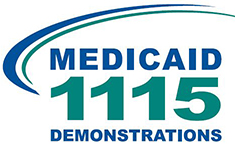Section 1115 Alternative Medicaid Expansions: Summative Evaluation Report
Download
Associated Project
New Approaches for Medicaid: The 1115 Demonstration Evaluation
Prepared for:
U.S. Department of Health and Human Services, Centers for Medicare & Medicaid Services, Center for Medicaid and CHIP Services
Key Findings
- Using Medicaid to support enrollment in qualified health plans on the Marketplace—known as premium assistance—appears to increase access to physician office visits and reduce unmet need for care. These findings align with our expectation that higher levels of physician reimbursement under premium assistance would give beneficiaries better access to care than traditional Medicaid coverage would. Our findings also suggest that premium assistance costs more than using Medicaid to cover people directly.
- Regression models based on American Community Survey data through 2017 reveal that people who live in states that require premiums or other monthly payments are less likely to enroll in Medicaid, regardless of whether a given person is expected to owe any payments at all. There was also a negative association between owing a monthly payment and the probability of enrolling in Medicaid. The largest payment was associated with the largest decrease in take-up.
- Financial incentives for specific healthy behaviors can prompt beneficiaries to engage in those behaviors, particularly if the incentives are easy to understand and beneficiaries have control over completing the necessary actions. We found some evidence that the demonstrations’ implicit incentives to form a relationship with a physician promote receipt of preventive care, but more mixed evidence on whether such incentives encourage people to get primary care or manage their chronic conditions.
This report presents findings from an evaluation of section 1115 demonstrations in six states—Arkansas, Indiana, Iowa, Michigan, Montana, and New Hampshire—that tested new approaches to administering Medicaid for low-income adults during the period 2014 - 2017.
How do you apply evidence?
Take our quick four-question survey to help us curate evidence and insights that serve you.
Take our survey
